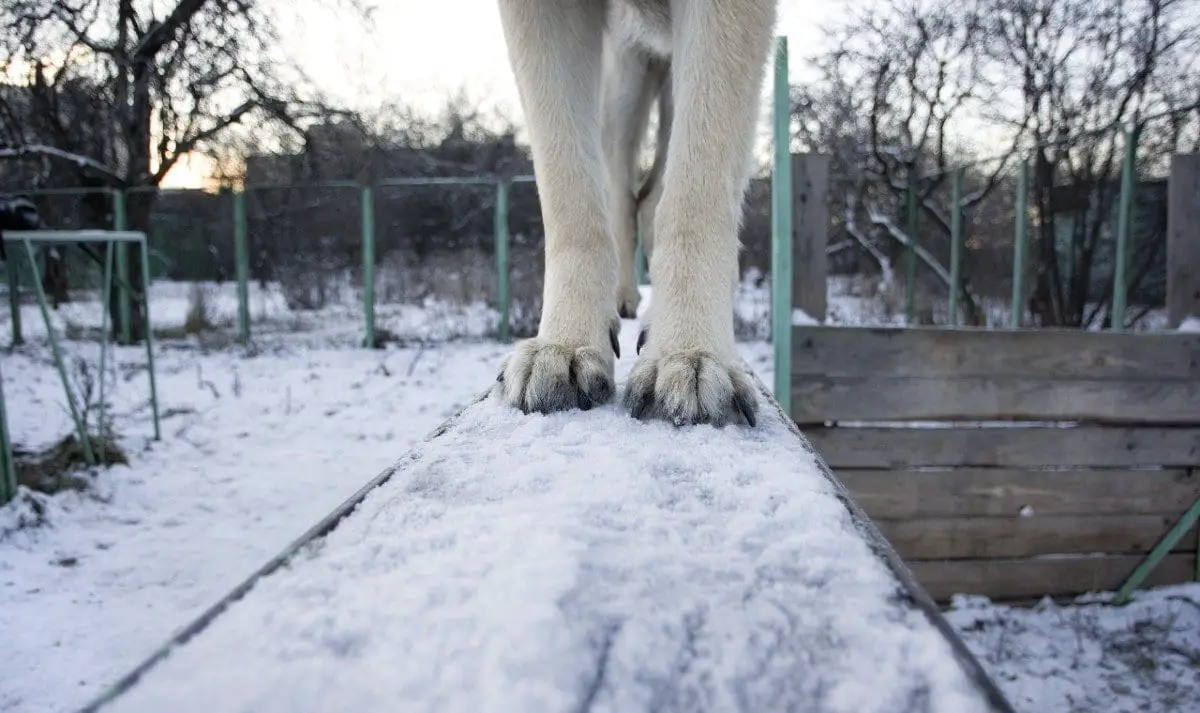Our pets cannot tell us when they have a cold, their joints are stiff or their paws become numb from cold weather conditions. We find out only when we realize our beloved friend is suffering and in pain or discomfort.
Canine frostbite is a condition that should be taken seriously as it can quickly jeopardize your pet’s health, even leading to death.
Frostbite occurs as a result of exposure to freezing or subfreezing temperatures. It most commonly affects the tips of the ears, the scrotum, the tail, the paws, and the toes.
When your four-legged friend is in a cold environment their body responds by reducing blood flow to external body parts. This allows blood flow to their vital organs but decreases the oxygen and warmth in the extremities, allowing ice crystals to form in the tissue.
Frostbite Versus Hypothermia
Frostbite and hypothermia are not the same things.
Hypothermia is when a canine’s body temperature drops and stays below the normal range of 100.4 to 102.5 degrees Fahrenheit. A dog can experience both frostbite and hypothermia if they remain in cold weather.
Symptoms may be patches of frostbitten skin as well as damage to internal organs. Some dogs will not survive this combination. Additional items working against survival are windy conditions, a wet coat, heart conditions, diabetes, and age.
Canine Frostbite Prevention
To prevent frostbite, first and foremost, use some common sense.
Limit and monitor time outdoors during cold weather. When accompanying your friend outdoors, periodically warm their ears between your hands and check their paws to keep snow and ice from collecting between toes.
If you reside in a cold winter climate, watch for hard tissue varying in color from pale to gray. When the area defrosts, the skin will redden and become tender. In severe cases, the tissue will turn black within a few days and die.
Think your dog has frostbite?
Do not self-diagnosis, and do not wait. Get your friend to a vet ASAP! As you head to the vet you are working against the clock. Time is crucial, as are your actions.
Wrap your dog in a dry towel or a warm blanket (not hot) from the dryer.
You can also gently warm the area with a washcloth and lukewarm water. Never use a heating pad or a hot water bottle.
This could damage nerves and blood vessels. Do not rub or massage the affected area. As the tissue warms, frostbite turns painful and can cause an accelerated heart rate due to pain as the circulation returns.
Antibiotics and pain medication may be prescribed to prevent infection and relieve pain.
In severe cases, amputation or surgical removal of affected tissue is not uncommon.
In some parts of the world, winter is cold, harsh, and unforgiving. Do not rely on your dog’s “winter coat” to protect them from the elements.
It is up to you to monitor their time outdoors and vigilantly be aware of frostbite and its symptoms.
Keep your friend warm, happy, and healthy through the up and coming winter months.

























